Seals Part III - The Weddells
The Weddell seals we encountered on our seal-tagging expedition were smaller, longer-haired, and far cuter than the southern elephant seals. Two of these characteristics allow for different methods to be used during tagging, one just makes the Weddell seal more enjoyable to look at. If you had to choose between a stuffed animal that looked like this:
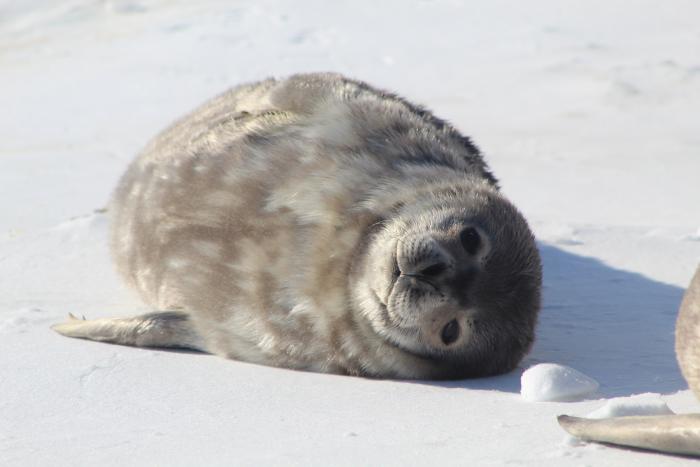
and one that looked like this:
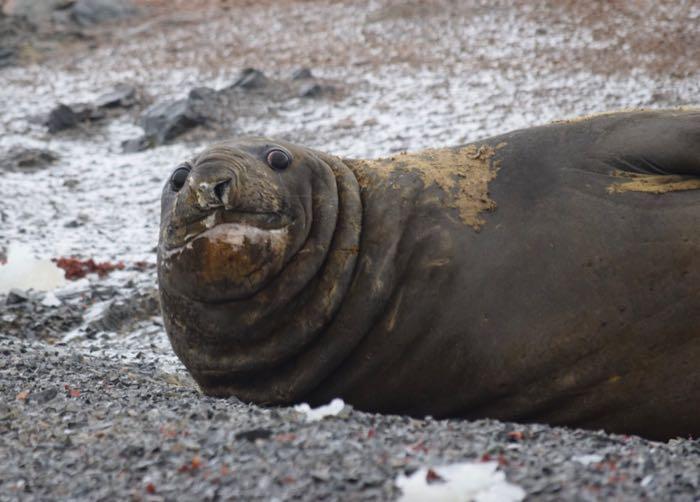
...which one would you pick? Exactly - the elephant seal because it is so ridiculously ugly.
I think the Weddell seals' cuteness can be attributed to the fact that they always look like they're smiling. I've also seen their appearance described as "cat-like" (Oona- tell me what you think) because of the similarities in the shape of their noses and their whiskers. A Weddell's whiskers are essential tools that help them navigate an environment that is often dark, either because of time or place. During the long Antarctic winter, when no sunlight at all reaches the tip of the Southern Hemisphere, Weddell seals still need to find food, so they use their vibrassae, or whiskers, each of which has more than 500 nerve endings. The sensitive vibrassae allow the seal to detect small ripples in the water created by swimming fish or to feel along the bottom for food. They have to do the same when they dive deep into the water - while their eyes are larger than humans and therefore better at seeing in even tiny amounts of light, no sunlight can penetrate after about 200 meters of Southern Ocean water. Since Weddell seals often dive as far as 2000 meters down, their hunting grounds are typically pitch black.
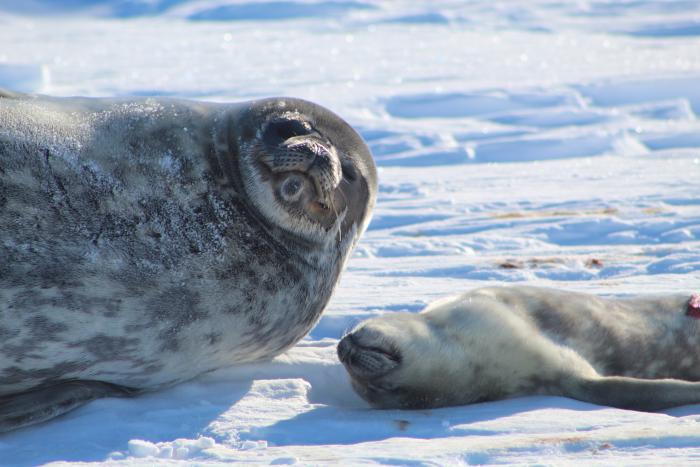
When a Weddell seal is born, it weighs around 60 pounds (27.5 kg) and has no blubber to keep it warm. PolarTREC educator Bridget Ward studied Weddell seal pups and their ability to thermoregulate or maintain a comfortable internal temperature - you can read her blog posts here. However, an adult Weddell seal has so much blubber insulation that its skin feels cold to the touch, even though it is 104˚F on the inside. If you were 104˚F on the inside, your skin would feel like it was burning up.
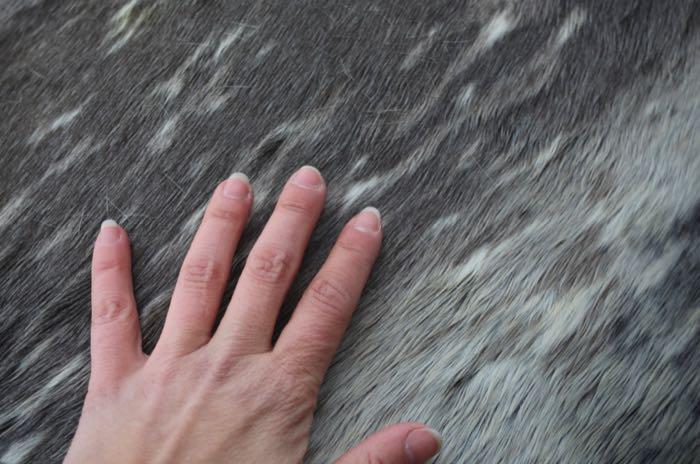
Like elephant seals, Weddell seals haul out on the ice to molt, but by the time we arrived in early February (under Permit FCO No. 03/2019-20), the elephant seals were mostly just starting the molting process, while the Weddell seals had generally already grown a new, thick fur coat. Because their fur was longer, the tag team could use a different adhesive than they did with the elephant seals - a superglue which dried instantly, meaning a smaller dose of medicine could to be used to anesthetize the animal because they only had to maintain sedation for a shorter time.
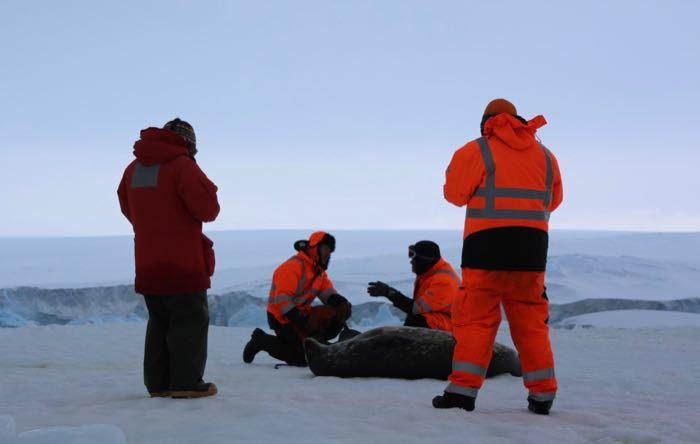
While female Weddell seals are larger than males, neither come anywhere close to the size of an elephant seal (max weight = 3,175 kg or 7,000 pounds). Females can grow up to 600 kg (1360 lbs) while males top out at 500 kg (1100 lbs). Their smaller size made it easier for Gui, Lars, and Mark to restrain them with the head bag while the dose of anesthesia was delivered directly into the blood stream via the extradural vein (which runs along the spine).
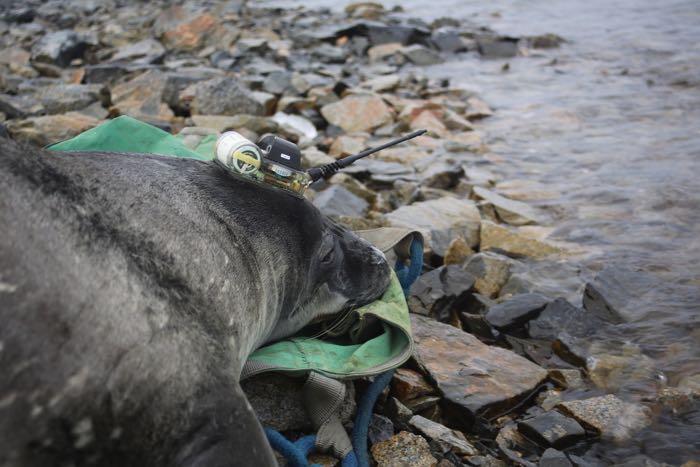
Elephant seals can dive deeper than Weddells but they are more challenging to safely tag. Having a combination of both species provides a more comprehensive picture of changes in ocean water as well as habits of each type of animal for the scientists studying them.


Comments